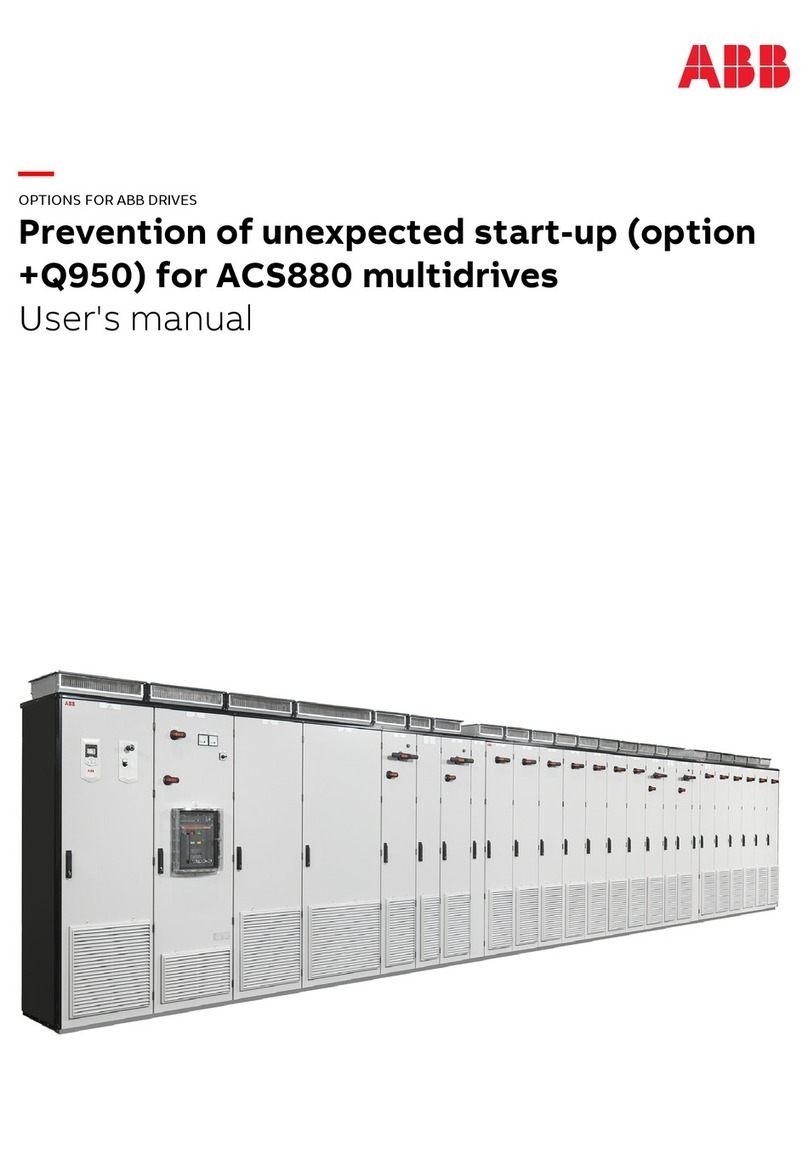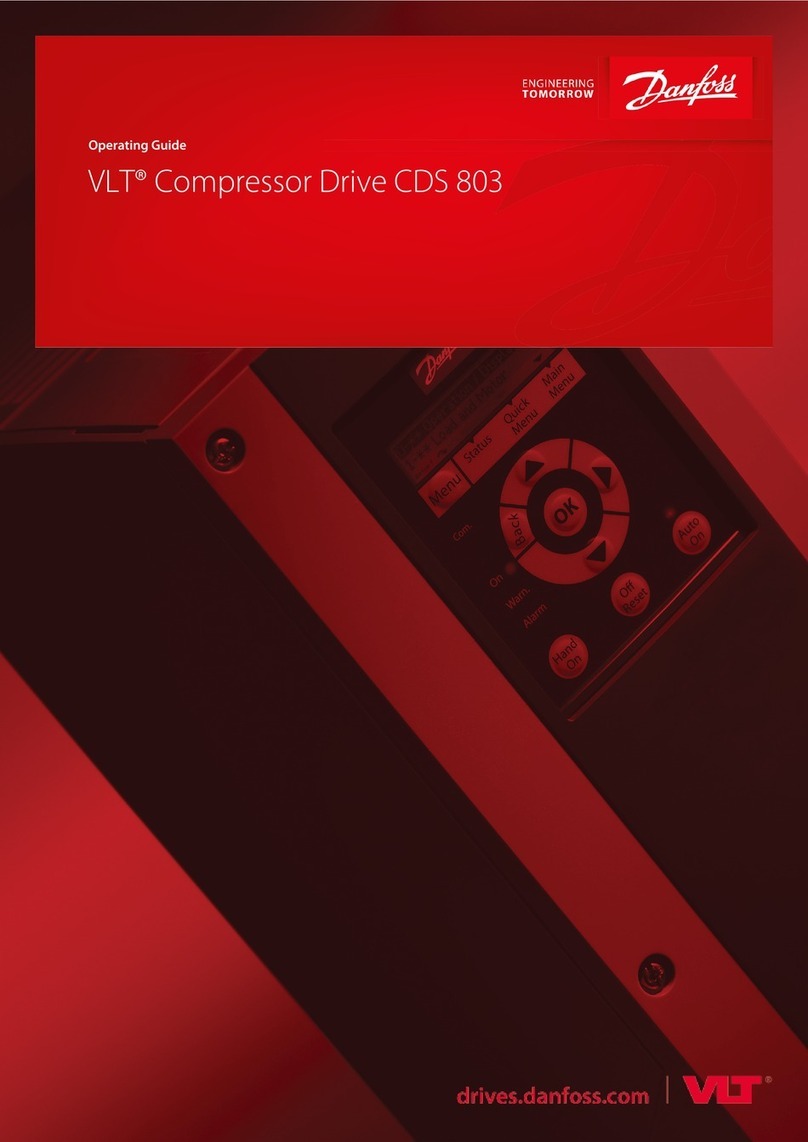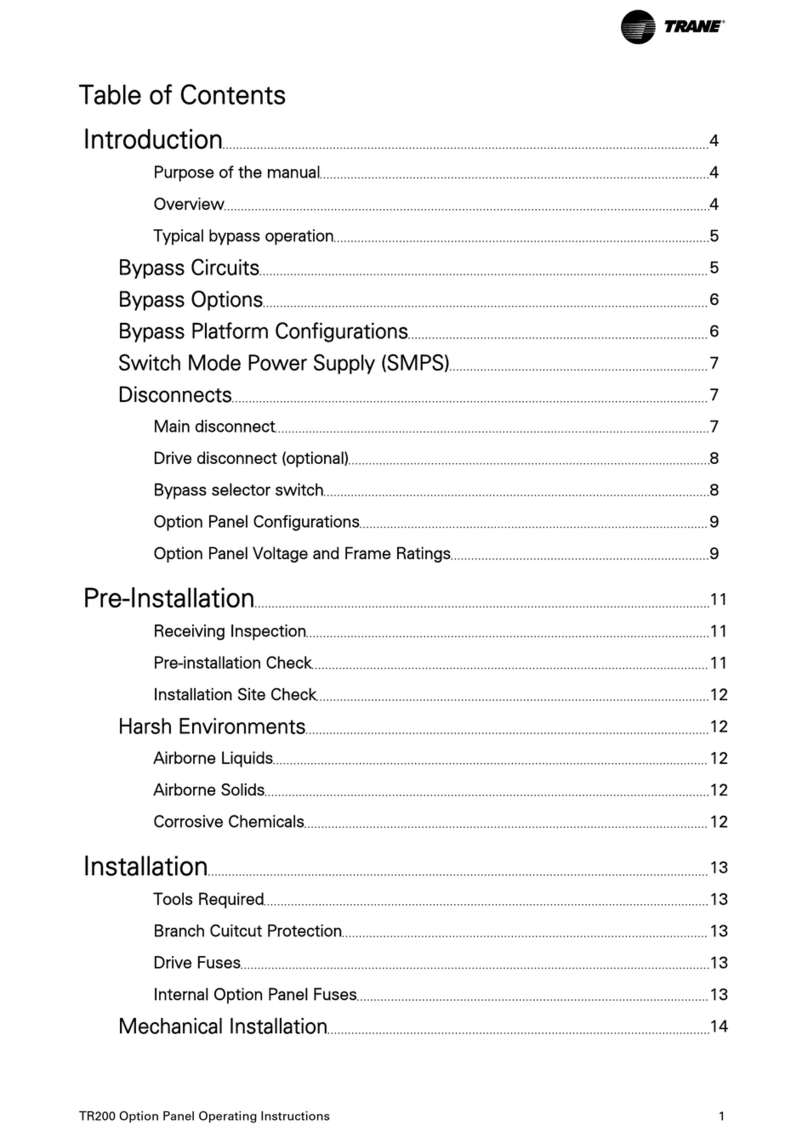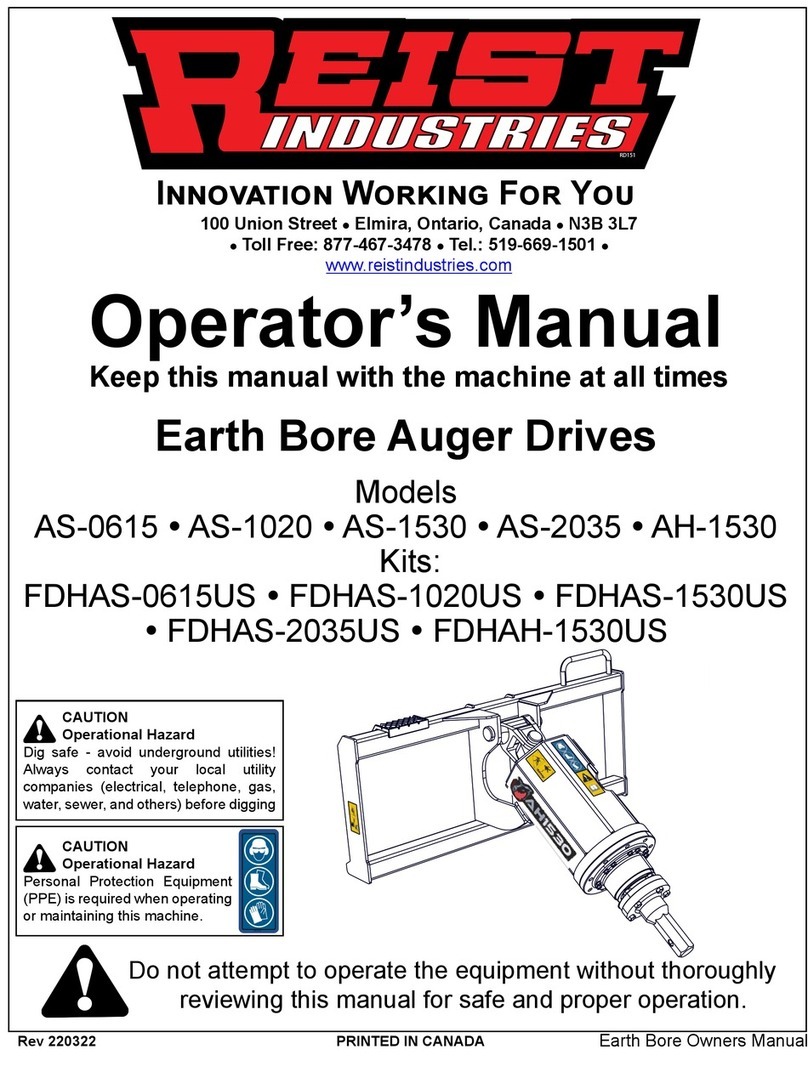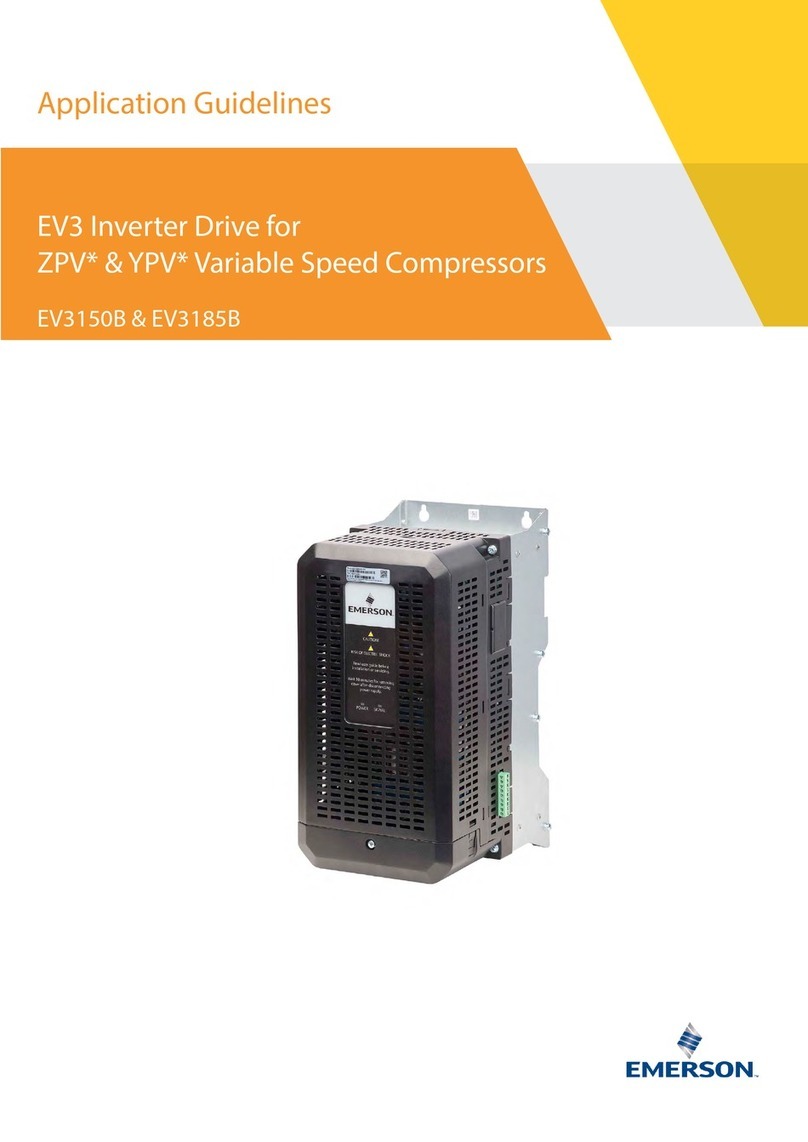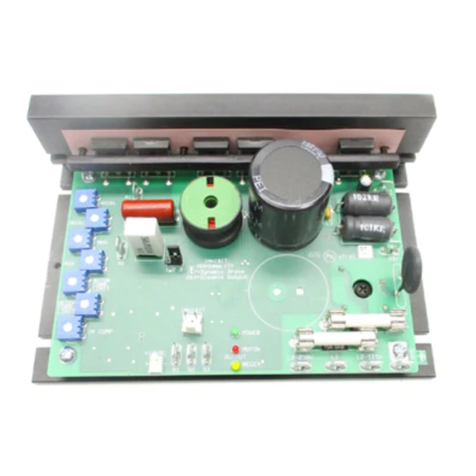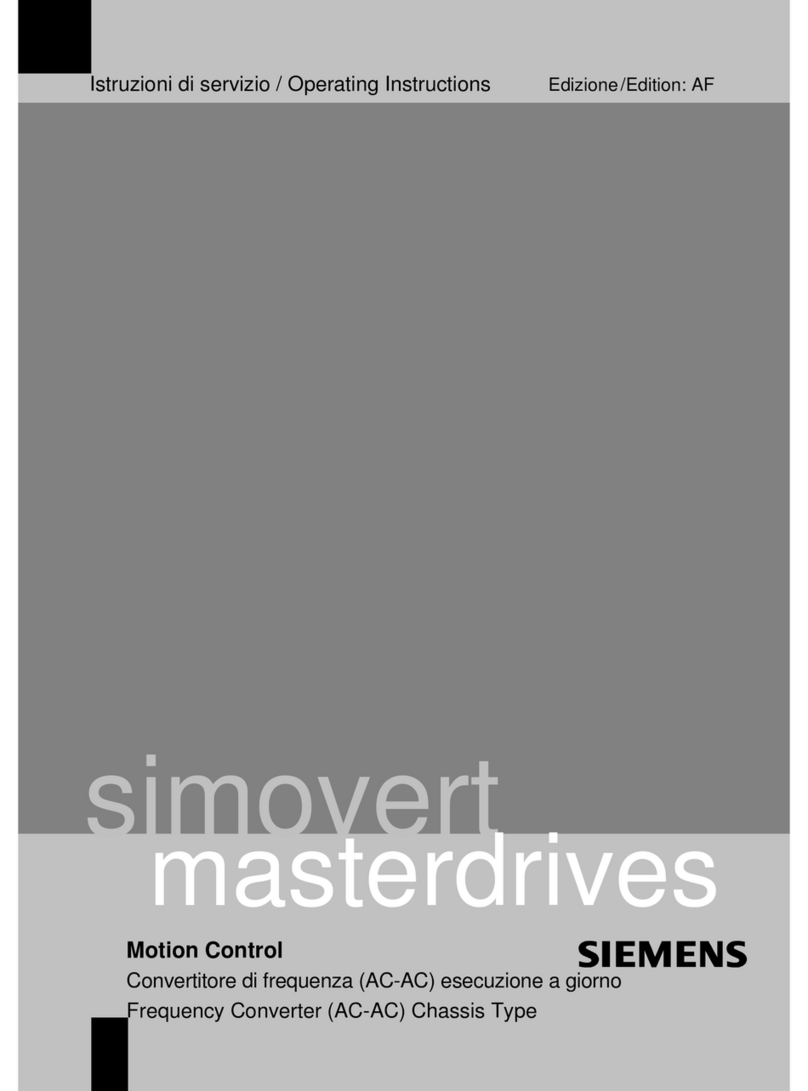GO SwissDrive G2 Wiring diagram

GO SwissDrive AG
Industriestrasse 4
CH-9473 Gams (SG)
Telephone +41 817722525
Fax +41 817722552
Email [email protected]
Website www.go-swissdrive.com
In the pursuance of technical progression, we reserve the right to
amend these operating instructions in accordance with technology.
Retain for future use!
Translation of original operating instructions
Version:�04.2018
GO SwissDrive drive system G2

GO SwissDrive AG Operating instructions
2 04.2018

GO SwissDrive AG Operating instructions
04.2018 3
List of contents
1. Welcome 4
1.1. Basic information about the
operating instructions 5
1.2. Using these operating instructions 5
1.3. Other applicable documents 5
2. Intended use 6
2.1. Use and legal foundation 6
2.2. Equipment versions 7
2.3. Description of the components 7
2.4. Description of the functions 8
3. Transport 11
3.1. Transporting the battery 11
3.2. Transport the EVO operating element 11
4. Installation and assembly 12
4.1. Mounting the motor 12
4.1.1. Installing the rear wheel 12
4.1.1.1. Threaded axle 12
4.1.1.2. Hollow axle with quick release 14
4.1.1.3. Through axle 17
4.1.2. Removing the rear wheel 18
4.1.3. Mounting a brake disc 20
4.2. Mounting the EVO operating element 21
4.3. Cable connections 21
4.4. Mounting optional components 23
4.5. Table of torque settings 23
5. Commissioning 24
5.1. EVO operating element 24
5.2. Riding information 25
5.3. Before starting 26
5.3.1. Charge level indicator 27
5.4. Battery safety instructions 27
5.4.1. Charging the battery 29
5.4.2. Exhaustive discharge 30
5.4.3. Removing the battery 30
5.4.4. Inserting the battery 31
5.4.5. Preparing for winter and storage 31
6. Operating information 32
6.1. Using the grip controls 32
6.2. EVO operating element menu 35
6.2.1. Menu when riding 35
6.2.2. Menu when stationary 37
6.2.3. Status line 37
6.2.4. Main menu 40
6.3. Operating element conguration 42
6.3.1. System settings 42
6.3.2. Function settings 46
6.4. Telephone menu 46
6.5. Data storage 47
6.6. Charging a mobile telephone via USB 48
7. Information and fault messages 49
7.1. Service menu 49
7.2. Warning notice 50
7.3. Fault messages 50
8. Maintenance, care and repairs 53
8.1. Hazard information during maintenance 53
8.2. Care and maintenance of the system 53
8.3. Care and maintenance of the battery 54
8.4. Care and maintenance of the
EVO operating element 54
8.5. Repairs 55
9. Storage 56
10. Disposal 56

GO SwissDrive AG Operating instructions
4 04.2018
1. Welcome
Dear Customer,
we are delighted that you have chosen our GO SwissDrive system. Our
trusted drive system has won numerous awards and is synonymous with
high Swiss quality and dynamic riding pleasure.
The operating instructions contain important information about safe and
proper operation, repairs, storage, decommissioning and disposal. To use
the product correctly and to avoid incorrect operation, carefully read the
operating instructions before commissioning.
Retain the operating instructions for future reference in case you have any
questions. If you have any questions to which the operating instructions
are unable to provide an answer, please consult your dealer.
If, when you received the E-Bike from your dealer, it was not operationally
ready, contact the salesperson from whom you purchased the complete
E-Bike.
This is a translation of the original operating instructions for the
GO SwissDrive drive system. In your bicycle's general operating
instructions, you can nd further details about handling the E-Bike.
If you sell the product to a third party, please ensure that these operating
instructions are handed over as well.
We hope you have lots of fun with our drive system.
Regards, the GO SwissDrive Team

GO SwissDrive AG Operating instructions
04.2018 5
1.1. Basic information about the operating instructions
The abbreviation OI is used hereafter when referring to these operating
instructions. The OI belong to the product and contain important informa-
tion about safe and proper operation, repairs, storage, decommissioning
and disposal.
The following typographical conventions are used throughout the OI:
NOTICE!
Pay particular attention to this text.
CAUTION!
Danger when performing the described activity and during operation from
hazardous sources: possible physical injuries or risks to health. This symbol
also warns you about improper behaviour that could lead to material
damage and negative impacts on the environment.
WARNING!
Danger when performing the described activity and during operation from
hazardous sources: possible severe physical injury.
In terms of the drive components, the instructions comply with DIN EN
15194 and, in relation to S-Pedelecs, meet EU regulation no. 168/2013.
Failure to observe the safety instructions will render any compensation
claims invalid.
The OI issued at the time of product delivery was up-to-date.
1.2. Using these operating instructions
These OI contain all of the information necessary for correct use of the
product.
To operate the product properly and to avoid incorrect operation, carefully
read the OI before commissioning.
To prevent damage to the product or other items and to avoid any risk to
the health of yourself and others, strict adherence to the details provided
in the OI is required. If you sell the product to a third party, please ensure
that these OI are handed over as well.
1.3. Other applicable documents
- Operating instructions of E-Bike
- Operating instructions of battery

GO SwissDrive AG Operating instructions
6 04.2018
2. Intended use
2.1. Use and legal foundation
The GO SwissDrive drive system meets the requirements of DIN 15194
for bicycles with electric motor power assistance as well as directive
2014/30/EU for electromagnetic compatibility.
The GO SwissDrive drive system is available in two versions:
The normal Pedelec version can be used without restriction like a bicycle
because the power assistance is only activated up to a speed of 25 km/h
while the rider is pedalling.
Even though a Pedelec can be used without restriction, the recom-
mendation from GO SwissDrive is to wear a helmet and goggles on
account of the high speeds.
The S-Pedelec version comes with a number of obligations as the power
assistance works up to a speed of 45 km/h while the rider is pedalling.
One of the obligations is to wear a helmet during use according to
§ 21a section 2 of the (German) road trafc act. Another obligation
(in Germany) is to display insurance because, according to § 30a of
the (German) road trafc, S-Pedelecs fall into the moped category.
The regulations concerning pushing aids are country-specic. If
you were born after 01.03.1965, you must check (in Germany) before
riding the E-Bike whether you require a moped licence or a category
AM licence.
Observe the following points for riding correctly and safely:
In the bicycle's general operating instructions you can nd informa-
tion about the intended use of the E-Bike, the maximum permissible
weight and the routes that you are authorised to use.
The E-Bike sector is part of a dynamic market owing to the rising
demand. There is a chance, therefore, of the current regulations
for E-Bikes being adapted in future. Keep up-to-date with the daily
news for adaptations and changes in legislation.
Before using the E-Bike, we recommend taking out third party insur-
ance. If you are currently not insured, nd out about suitable offers
from your insurance agent.

GO SwissDrive AG Operating instructions
04.2018 7
2.2. Equipment versions
The GO SwissDrive drive system is offered in three different versions:
Standard, Speed and Power. The differences between the versions are as
follows:
Motor Standard Speed Power
Output
(nominal)
250 W 370 W 370 W
Torque 40 Nm 40 Nm 45 Nm
Weight 5.3 kg 5.6 kg 5.6 kg
Typical use Allround S-Pedelec S-Pedelec
2.3. Description of the components
The motor is the core of the GO SwissDrive drive system. It is a rear motor
that transfers power directly to the rear wheel hub of the E-Bike.
Rear wheel motors offer smooth acceleration, high elasticity, smooth
running and plenty of reserve power.
At 18 to 25 decibels, the GO SwissDrive drive system is as quiet as
a whisper.
The EVO operating element acts as a communication interface for the
GO SwissDrive drive system.
With one grip, you can use the EVO operating element to switch the
system on and off, select the power assistance levels and read various
information from the system. Furthermore, it offers a variety of displays and
conguration possibilities.
The operating element is IP65 protected against dust and spray water.
However, the display should be removed during transit on bike car-
riers.

GO SwissDrive AG Operating instructions
8 04.2018
To supply the GO SwissDrive drive system with power there is a battery
and a battery charger. Different types of GO SwissDrive battery can be
used. For more specic information about the batteries, read the operating
instructions of the battery manufacturer.
The wiring harness joins the components together and supplies them
with power. As such, the wiring is a communication interface for the com-
ponents. The drive system can be enhanced with optional components,
such as a lighting system, depending on the specications of the bike
manufacturer.
2.4. Description of the functions
The main function of the drive system is to provide motor power assistance
while the bike is being ridden. The electric motor assists the rider of the
E-Bike during pedalling. The motor power assistance can be applied in
increments.
The GO SwissDrive drive system features 8 levels of power assistance:
level -2 to 5. At level 0, power assistance is deactivated. In the positive
power assistance levels 1 to 5, the rider is assisted with additional positive
torque from the motor during pedalling. Here, the available motor output
rises with the selected power assistance level: from level 1 = low power
assistance to level 5 = maximum power assistance. In the negative power
assistance levels -2 and -1, the motor is driven by a generator. This means
that part of the energy generated when the bike is being ridden is fed back
into the battery by means of a charge current.

GO SwissDrive AG Operating instructions
04.2018 9
This so-called recuperation causes motor braking, which is perceived by
the rider as deceleration. Here, recuperation at level -2 is stronger than at
level -1. To set the system to different riding situations, the GO SwissDrive
drive system has three riding modes. These can be selected on the
display:
• Eco mode: The focus here is on achieving the greatest range with
consumption-optimised motor power assistance.
• Power mode: The maximum motor power assistance is made available
to the rider.
• Tour mode: This operating mode is a balanced mix of range and
performance.
The pushing aid feature enables acceleration of the E-Bike up to 6 km/h
without any pedalling effort by the rider. This makes it easier to push
the E-Bike particularly on uphill gradients or with heavy loads. On some
models, a reverse pushing aid is also implemented. The pushing aid fea-
ture makes it possible for S-Pedelecs to accelerate to a set level according
to the country-specic registration.
If the optional brake grip with auxiliary contact is used, motor power
assistance can take place during braking. In this event, the motor is
switched to recuperation mode and the braking energy is fed back into
the battery.
The hill-start assist function makes it possible to congure a xed speed
from which recuperation engages automatically and the drive system
brakes.
By measuring the rider's pedalling frequency, the GO SwissDrive drive
system can also provide a gear shift recommendation. A higher or lower
gear on the bicycle is recommended to the rider via the display of the
EVO operating element in order to achieve the desired pedalling frequency.
Pressing and holding the (+) button activates the boost function and
the highest level of power assistance is activated. If the boost function is
activated for longer than 5 seconds, the power assistance level set by
the boost function remains active.

GO SwissDrive AG Operating instructions
10 04.2018
In order to plan the route better, the rider is shown information about the
remaining distance. The remaining distance that can be reached with the
current battery charge level is calculated based on the current riding style,
and is communicated to the rider via the EVO operating element.
The remaining distance displayed here is an indication of the calcu-
lated remaining distance based on current and past consumption.
Future changes, such as topography and consumption, are unable to
be factored into this however. It is therefore important to also check
the remaining battery capacity in the display.
The display of the EVO operating element features an integrated Bluetooth
chip and can be connected via Bluetooth 4.0 to various devices such as
smartphones.
For connection of a compatible mobile telephone, the Bluetooth interface
must be activated. The EVO operating element must be switched on via
the "Bluetooth" sub-menu using the "Activate Bluetooth" button.

GO SwissDrive AG Operating instructions
04.2018 11
3. Transport
There are different transportation regulations in terms of the individual
components of the GO SwissDrive drive system.
3.1. Transporting the battery
Before transporting the E-Bike, remove the battery and transport it using
the original packaging supplied. This is special hazardous materials pack-
aging on which the necessary warning notices are displayed.
In connection with this, strictly observe the regulations applicable
in your country for the dispatch of hazardous materials!
The EVO operating element will then attempt to make a connection. In
order to connect to the EVO operating element, the "EVO Connect" app
is required. The "EVO Connect" app can be downloaded from the Apple
app store (iOS device) or Google Playstore (Android device).
Devices from the following Smartphone operating system versions are
supported owing to Bluetooth specication 4.0:
• iOS 5+
• Android 4.3+
Please note that due to different hardware versions there may still be
incompatibility issues for which GO SwissDrive is unable to accept
liability.
3.2. Transporting the EVO operating element
To prevent scratches and damage, the display of the EVO operating
element should not be transported together with sharp objects, such as
keys or pen-knives.
The display of the EVO operating element is protected to IP65 against
dust and water splashes. Nevertheless, the display should still be removed
from its holder and stored safely when the E-Bike is transported on a car
or trailer.

GO SwissDrive AG Operating instructions
12 04.2018
4. Installation and assembly
The motor should only be mounted when disconnected from the
power supply.
Ensure that all components are securely attached so that there are
no loose parts.
After installing and activating the system, check whether a fault
message is displayed on the EVO operating element.
4.1. Mounting the motor
Always use a torque wrench for mounting and adhere to the torque
specications.
4.1.1. Installing the rear wheel
The procedure for installation of the rear wheel varies depending on the
type of axle used.
4.1.1.1. Threaded axle
1. Mount the torque arm and spacer sleeve on the dedicated anti-rotation
device of the threaded axle of the GO SwissDrive motor. Ensure that the
motor cable is not trapped by the torque arm.
2. Select the highest gear on the chain gears so that the shift mechanism
points outwards.
The rear wheel can now be inserted in the frame ends of the E-Bike.
Ensure that the cable outlet of the motor is in its mounted state and the
torque arm is turned in such a way that it can be secured to the frame.
3. Now tighten the M10 axle nuts evenly. Ensure when doing this that the
washers are placed between the frame and axle nuts. These must lie at
against the surface. It is important to ensure that the axle nuts are tight-
ened with the torque wrench to a maximum of 45 Nm.

GO SwissDrive AG Operating instructions
04.2018 13
Observe also the bicycle frame specications of the bicycle manufacturer.
Use only self-locking M10x1 nuts. Genuine replacement nuts are
available from your specialist dealer as a GO SwissDrive replacement
part.
4. Tighten the torque arm bolts to the specied torque of 8-9 Nm to the
frame.
Pay attention to any limitations imposed by the frame/bicycle manu-
facturer and also the bolt manufacturer.
5. Re-attach the brake cable on rim brakes as soon as the wheel has
been tted. On hydraulic brakes, it is important to close the quick release
in addition to immediately attaching the brake element. When the wheel is
turning, make sure that the brake element touches neither the rim nor the
tyre or the spokes. On disc brakes, pull the brake lever continually until rm
pressure can be felt. It should not be possible to pull the brake lever as
far as the handlebar. There is more information about this in the bicycle's
general operating instructions.
6. Check on the display of the EVO operating element that the system is
switched off and the battery is not connected. Then, and only then, connect
the motor to the wiring harness. To do this, insert the motor connector in
the receiver on the wiring harness. Note that the connector is mechanically
(geometrically) coded against polarity reversal. Fit the connector slowly
and carefully, do not to exert force under any circumstances.
Always hold by the connector. Never pull the cable or the shrink-t
hose.

GO SwissDrive AG Operating instructions
14 04.2018
7. Finally, attach the cable with a cable tie or secure in the dedicated posi-
tion on the frame. The cable should not protrude outwardly to the side nor
interfere with the spokes of the rear wheel or rub against the motor.
Ensure that the cable is not under tension and, if cable ties are used,
that these do not pinch the cable.
Always use a torque wrench for mounting and adhere to the torque
specications.
Handle the connector with care so that it does not suffer from
damage or water ingress.
4.1.1.2. Hollow axle with quick release
1. Mount the torque arm and spacer sleeve on the dedicated anti-rotation
device of the hollow axle of the GO SwissDrive motor. Ensure that the
motor cable is not trapped by the torque arm.

GO SwissDrive AG Operating instructions
04.2018 15
2. Then, unless already done, guide the quick release axle through the
hollow axle of the rear wheel. Screw the counternut by hand 2-3 turns onto
the thread of the clamping axle to ensure that there is sufcient clearance
when installing.
3. Select the highest gear on the chain gears so that the shift mechanism
points outwards. The rear wheel along with the clamping axle can now be
inserted in the frame ends of the E-Bike. Ensure that the cable outlet of the
motor is in its mounted state behind the axle and the torque arm is turned
in such a way that it can be secured to the frame. Pay attention also the
position of the torque arm. This must be positioned so that it can then be
screwed to the bicycle frame.
4. Tighten the nut of the quick release axle until it comes into contact with
the frame. Then use the actuating lever of the quick release to apply an
axial clamping force. This secures the rear wheel in the desired position.
Strictly observe the operating instructions of the specic quick
release.
Use only the supplied quick release. Genuine replacement parts are
available from the specialist dealer.

GO SwissDrive AG Operating instructions
16 04.2018
5. Now secure the torque arm to the frame and tighten the bolt, if present,
to the prescribed torque of 8-9 Nm*.
Pay attention to any limitations imposed by the frame/bicycle manu-
facturer and also the bolt manufacturer.
Depending on the version used, the torque arm may not have to be
secured to the frame with a bolt.
6. Re-attach the brake cable on rim brakes as soon as the wheel has
been tted. On hydraulic brakes, it is important to close the quick release
in addition to immediately attaching the brake element. When the wheel is
turning, make sure that the brake element touches neither the rim nor the
tyre or the spokes. On disc brakes, pull the brake lever continually until rm
pressure can be felt. It should not be possible to pull the brake lever as far
as the handlebar.
There is more information about this in the bicycle's general operating
instructions.
7. Check on the display of the EVO operating element that the system is
switched off and the battery is not connected. Then, and only then, connect
the motor to the wiring harness. To do this, insert the motor connector in
the receiver on the wiring harness. Note that the connector is mechanically
(geometrically) coded against polarity reversal. Fit the connector slowly
and carefully, do not to exert force under any circumstances.
Always hold by the connector. Never pull the cable or the shrink-t
hose.
8. Finally, attach the cable with a cable tie or secure in the dedicated posi-
tion on the frame. The cable should not protrude outwardly to the side nor
interfere with the spokes of the rear wheel or rub against the motor.
Ensure that the cable is not under tension and, if cable ties are used,
that these do not pinch the cable.

GO SwissDrive AG Operating instructions
04.2018 17
4.1.1.3. Through axle
1. The torque arm has a hexagon recess. Mount the torque arm and
spacer sleeve on the dedicated anti-rotation device of the hollow axle of
the GO SwissDrive motor. Ensure that the motor cable is not trapped by
the torque arm.
2. Select the highest gear on the chain gears so that the shift mechanism
points outwards. Then position the hub of the rear wheel between the
mountings of the bicycle frame. Ensure that the cable outlet of the motor
is in its mounted state behind the axle. Then check that the torque arm is
located in the dedicated recess in the frame.
3. Now guide the through axle through the mounting in the bicycle frame
and through the hub of the rear wheel. Then tighten the axle to the pre-
scribed torque of the axle manufacturer and/or bicycle manufacturer.
4. Depending on the version, the actuating lever of the quick release or a
screw-type clamp can be used to apply an axial clamping force to secure
the rear wheel in the respective position.
5. Re-attach the brake cable on rim brakes as soon as the wheel has been
tted. On hydraulic brakes, it is important to close the quick release in
addition to immediately attaching the brake element. When the wheel is
turning, make sure that the brake element touches neither the rim nor the
tyre or the spokes. On disc brakes, pull the brake lever continually until rm
pressure can be felt. It should not be possible to pull the brake lever as far
as the handlebar.
There is more information about this in the bicycle's general operating
instructions.
6. Check on the display of the EVO operating element that the system is
switched off and the battery is not connected. Then, and only then, connect
the motor to the wiring harness. To do this, insert the motor connector in
the receiver on the wiring harness. Note that the connector is mechanically
(geometrically) coded against polarity reversal. Fit the connector slowly
and carefully, do not to exert force under any circumstances.
Always hold by the connector. Never pull the cable or the shrink-t
hose.
Always use a torque wrench for mounting and adhere to the torque
specications.
Handle the connector with care so that it does not suffer from
damage or water ingress.

GO SwissDrive AG Operating instructions
18 04.2018
7. Finally, attach the cable with a cable tie or secure in the dedicated posi-
tion on the frame. The cable should not protrude outwardly to the side nor
interfere with the spokes of the rear wheel or rub against the motor.
Ensure that the cable is not under tension and, if cable ties are used,
that these do not pinch the cable.
Always use a torque wrench for mounting and adhere to the torque
specications.
Handle the connector with care so that it does not suffer from damage
or water ingress.
4.1.2. Removing the rear wheel
In the event of a tyre defect or to service the gear shift components, it may
be necessary to remove the rear wheel.
First read the basic information in the bicycle's general operating
instructions. This can be found in the chapters "Removing and
installing the wheel" and "Using quick releases and through axles".
Do not remove the rear wheel until this has been done. Consult your
specialist bicycle dealer if you still have questions.
Since the rear wheel contains the drive unit of the GO SwissDrive system,
observe the following procedure:
1. Switch off the system on the operating element and remove the battery.

GO SwissDrive AG Operating instructions
04.2018 19
2. After removing the battery, switch the EVO operating element on and off
again in order to completely de-energise the system. The rear wheel must
be stationary when doing this.
3. Park the E-Bike so that the rear wheel can be removed. Ideally, the
E-Bike should be clamped on a dedicated assembly stand. Seek help to do
this owing to the heavy weight of the E-Bike.
4. Shift the chain gears to the smallest gear on the rear wheel (highest
gear) as this will facilitate removal and installation.
Remove the brake if necessary. Observe the operating instructions of
the brake manufacturer to do this.
5. Disconnect the motor connector from the wiring harness. Pull apart the
connection to do this. Make sure at all times that the connector itself is
pulled and not the cable or the shrink-t hose. If present, open the cable tie
securing the motor cable.
6. Now remove the rear wheel in the reverse order of installation
(see above).

GO SwissDrive AG Operating instructions
20 04.2018
4.1.3. Mounting a brake disc
It is possible to mount a standard 6-hole brake disc on the GO SwissDrive
motor. Use only brake discs measuring ≥ 180 mm in diameter.
The particular shape means that special T25 bolts must be used.
On brake discs with a thickness of 2 mm, use only M5x7 bolts (with
thread lock) in accordance with ISO standard 7380.
1. Place the brake disc in the designated direction of rotation on the
mounting of the GO SwissDrive motor.
2. Start all bolts by hand and screw in two or three turns.
3. Then tighten all bolts lightly and evenly.
4. Turn the brake disc in the opposite direction of rotation and hold it rmly
in this position.
5. Then tighten the bolts in diagonal sequence using a torque wrench.
The prescribed torque is 5 Nm.
Use only original GO SwissDrive bolts available from an authorised
specialist dealer.
Adjust the brake calliper on the E-Bike so that it does not rub against
the housing of the motor.
Observe the instructions of the bicycle manufacturer and/or brake
manufacturer when doing this.
Table of contents
Popular DC Drive manuals by other brands
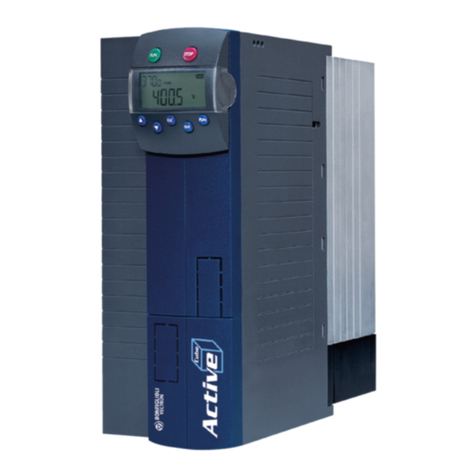
BONFIGLIOLI Vectron
BONFIGLIOLI Vectron ACTIVE CUBE manual
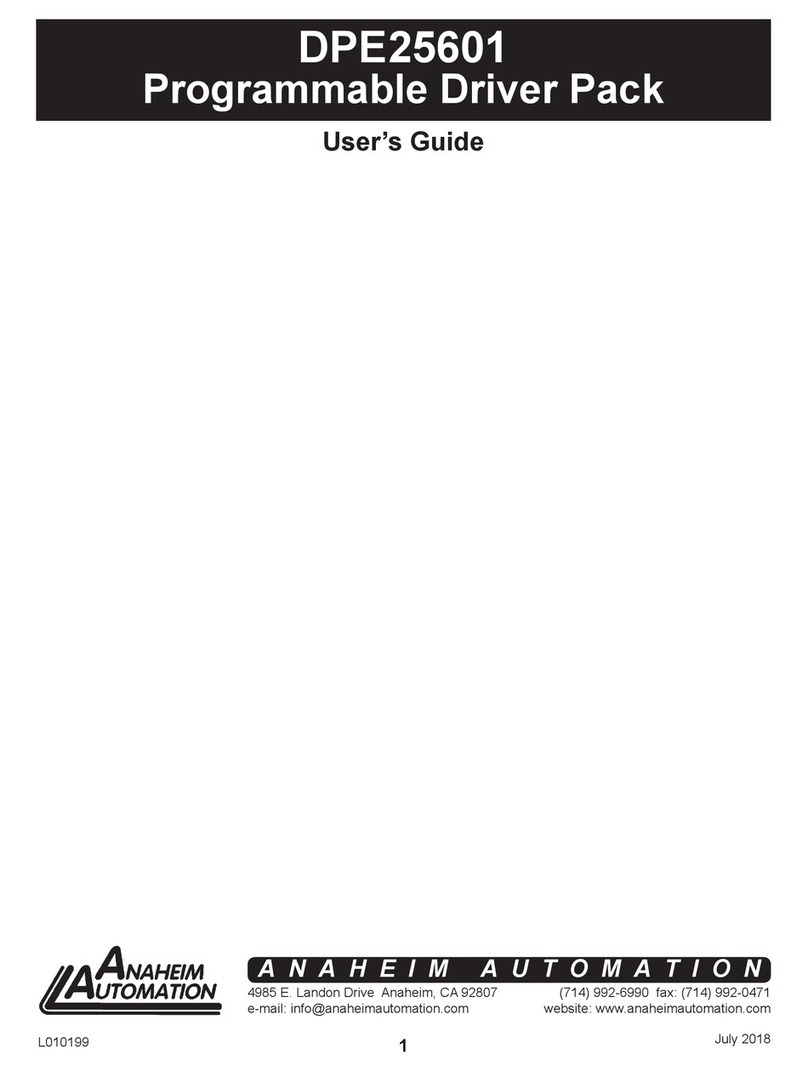
Anaheim Automation
Anaheim Automation DPE25601 user guide

Vacon
Vacon NXP/P user manual
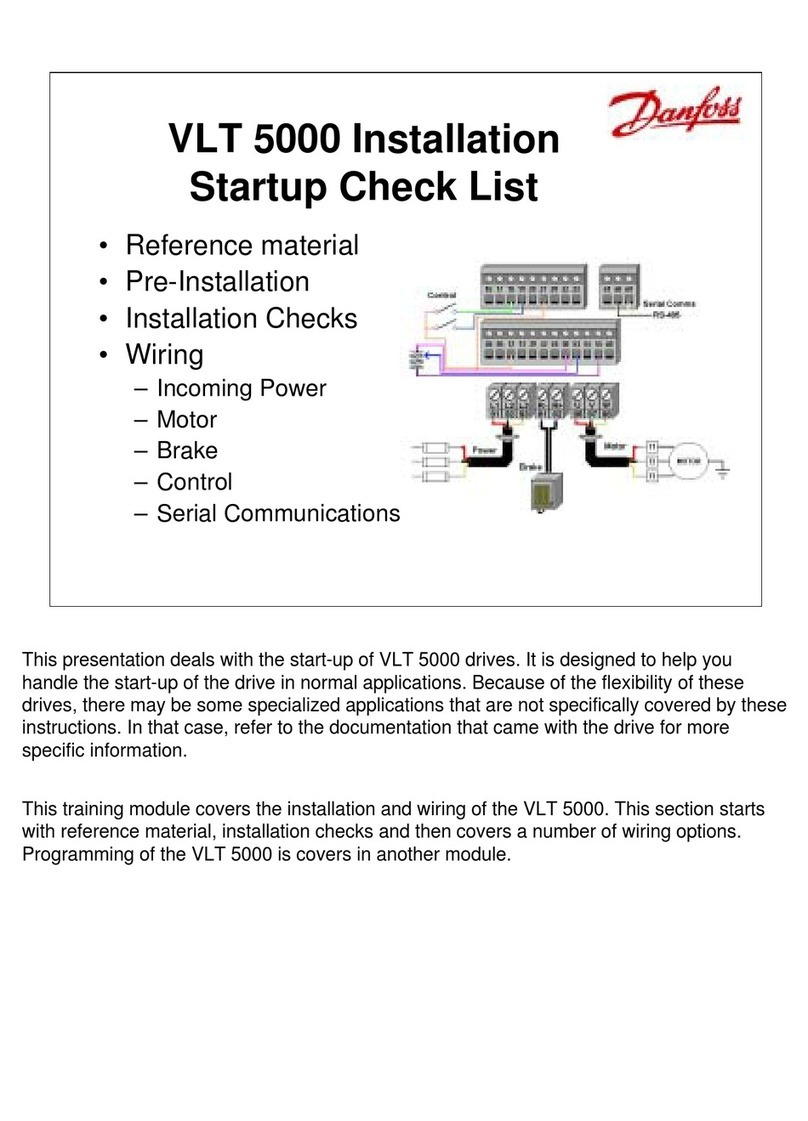
Danfoss
Danfoss VLT 5000 Series Installation Startup Check List
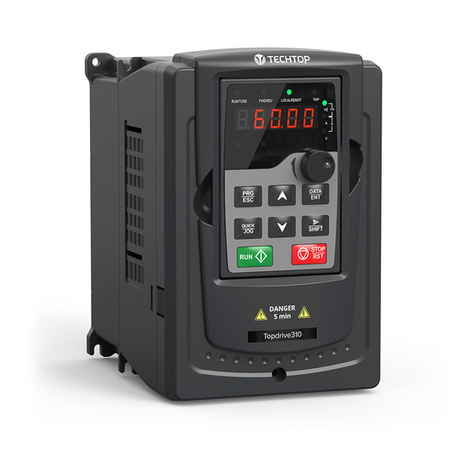
TECHTOP
TECHTOP TOPDRIVE310 Series installation guide

Trane
Trane TR1 6002-6004 installation instructions
